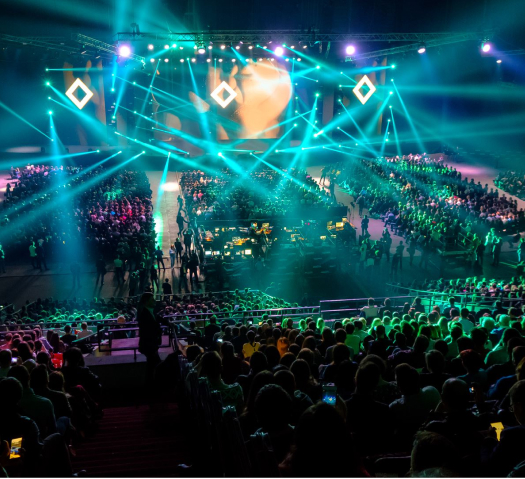Reach audiences with more accuracy
Based on the top 13 industries in the market, EveryBuyer clusters users into three personas reflecting their preferences, purchasing power, emotional factor, quality of life, trends, and stage of life.
Based on the top 13 industries in the market, EveryBuyer clusters users into three personas reflecting their preferences, purchasing power, emotional factor, quality of life, trends, and stage of life.


Navegg divided the market into 13 industries and discovered three different profiles in each of them.

The focus is on showing the audience's consumption behavior in each of the 13 industries in the market and the profiles present in each of them.
It encompasses all those users who have a profile or are willing to purchase financial products or services, such as insurance, investment plans, service packages, cards, loans, among others. Examples of advertisers: Banks, Finance Companies, Stockbrokers.
They tend to buy impulsively, rarely returning from a walk without a bag, as the act of shopping brings them pleasure. They buy for themselves, for family, for friends and even for mere acquaintances. When in debt, they seek loans and financing to regain consumer power. They love everything that makes it easy for them to buy.
They are organized, controlled and disciplined. They are always on budget and know exactly how to prioritize spending. They prefer to save rather than pay in installments, so they invest in consortia, private pensions, savings and low-risk investments. For them, it is essential to know all the details of a financial transaction. They usually have stable jobs and clear goals for the next stages of life.
They like exclusivity and personalized services combined with the comfort that technology offers. They have high consumption power and are more daring in terms of spending and investments. Special credit limits and international coverage are essential advantages, while relationship experience can be the decisive differentiator when hiring.

Represented by Internet users who intend to purchase or wish to acquire sports products or services. Whether those who practice a sport or just connoisseurs. Examples of advertisers: football clubs, major sports brands, sporting goods stores.
Represented by people who are fans of a club, league or sports organization and, therefore, tend to consume all products and services related to that entity. They may be part of an organization that brings them benefits related to games and sporting events. They are passionate, tend to collect and act with emotion when buying, often overcoming their financial condition.
People who have a lifestyle totally focused on physical well-being. They are concerned about the quality and quantity of the food they consume. They invest time and money in high-performance activities and products, and they usually go to a beauty center regularly. Usually, they practice physical activity regularly, but they are always open to anything that promises them more health or physical conditioning.
People who belong to this group lead an ordinary life but like to practice some kind of physical activity as a hobby or leisure. Your profile is associated with the collectivity, such as the weekend with friends, a group walk or even a picnic on the beach. Their purchase is related to an immediate need and, therefore, they are not judicious in terms of quality or price when choosing items.

In this industry are all those who are linked to trends or who consume fashion and beauty items, such as: clothes, shoes, accessories, cosmetics, perfumery, aesthetic services, and beauty salons. Examples of advertisers: Cosmetic brands and large apparel chains.
This group is made up of fashion visionaries, trendsetters and international celebrities. They tend to refinement and innovation and are responsible for testing and approving the latest in the fashion world. The purchase is linked to a sense of exclusivity and power. As they usually have a high consumption power, they end up paying much more for the benefit of being ahead.
Represented by people who are always connected to fashion and trends. They value image above all else and place great value on sophistication and the appearance of what they want. They are usually concerned with the reputation and luxury of what they choose for themselves and, therefore, tend to consumerism.
Here are the people linked to the credit facility. Good prices and discounts have a big influence on your decision. They are loyal to the stores in which they consume, as they become dependent on relationship benefits. As they usually look for basic products, fashion doesn't have as much weight in their decisions.

Users who intend to purchase or have an affinity for vehicles and brands of cars, motorcycles, and SUVs, whether in their first purchase or close to an exchange point. Examples of advertisers: automakers, dealerships, and large dealerships.
Mostly represented by class A men. In this cluster are those who are loyal to the brands and can afford more luxurious versions of the vehicles they want. Among the decisive factors are the comfort and status that the model provides. Those who opt for the used ones usually consider themselves experts or are nostalgic.
Public, mainly, by young people and newly married couples. Here are people as people for the cost-benefit in their purchases and who explore practical cars, as they can be used on a daily basis and for small trips. Design and modernity are important issues in the decision.
Made up of people who have no preference for brands, as they value low prices, long-term financing, consortia and seasonal offers. Search for used outgoing and compact cars. Here are the ones that are on motorcycles and they are too.

Users who are going through a time of moving, renovating or decorating their homes. It also has weekend DIYers. Examples of advertisers: furniture and decoration stores, building materials stores and architectural offices.
People present in this group are always carrying out small constructions or renovations, so they tend to buy little and often. They buy tools, multifunctional products and anything that can help transform the activity into a new experience. They are opinion leaders, as they understand the characteristics and repeat the same processes several times.
Sophisticated people who change their home decor according to trends. They insist on buying more expensive, exclusive and tailored products. They seek guidance from decorators and architects, are attuned, enjoy innovation and exclusivity. They value art and style more than functionality.
Group composed of people who are in a period of change and need to purchase several products at the same time. Therefore, easy credit and fast delivery are factors that have a great influence on the purchase. They tend to consume ready-made and entry-level products. These are people who are likely to buy different items for several months in a row.

In this group are the users in the phase of buying domestic or electronic equipment, whether out of necessity, luxury, or desire for innovation. Examples of advertisers: electronics brands, home appliance brands, electronics chains.
Formed by people who opt for innovation, even if the only difference is design. Renewal is a constant in their lives, as whenever possible they exchange their articles for updated models. As they usually have a high purchasing power, they tend to buy high-end products and renowned brands.
These people are in a phase that requires the acquisition of several products simultaneously and, therefore, they opt for combos or economical items. As they need to assemble the entire trousseau at once, they value ease of credit and seek to buy only the essentials, for example, TV, refrigerator and stove.
They tend to be impulsive and motivated by promotions. These people often buy even without needing the item, as they consider the opportunity. Formed mostly by the C class, this group prefers to wait for a product to go on sale, even if it is an urgent need. The emotional factor has a direct influence on the purchase decision.

Users who are at the time of buying or leasing a property, whether for their first residence or for investment. Here, the main social classes and lifestyles are present. Examples of advertisers: construction companies, land developers, and consortia.
Composed of people who prefer real estate in luxury condominiums or club condominiums. This group has compatible financial conditions and prefers apartments and houses with more than three bedrooms. The purchase is usually planned over the years and accompanies a time of transition in life, whether it is a change in pattern or an increase in the family and purchase.
This audience is composed of people with modern professions and/or coming from financially structured families. They prefer modern, well-located properties that have collective facilities such as laundry facilities, gym and gourmet space. Typically, they are smaller or individual properties and mixed condominiums of the home business type.
A group formed mostly by heads of family and, therefore, they value security and tend to buy to satisfy the family's needs. These people work a lot and have medium/low consumption power, therefore, they accept to live further away for comfort. Usually, they are looking to buy their first property to get out of rent.

Composed of users who guide their eating habits according to their lifestyle. Here they are from those looking for a healthy diet to fast food fans. Examples of advertisers: food and beverage brands, fast food chains and restaurants.
Formed mainly by young people or single people who live in large centers and have a hectic routine. Usually, they are part of the B/C class and look for practical and affordable products. Don't worry about the constant good with health and tend to be short-sighted.
This group is mainly composed of female housewives or young couples. These people value everything connected with the home, appliances and hygiene and cleaning products, in addition to valuing value for money. They have a strong connection with social events, whether family or friends, therefore, they consume in large quantities.
Formed mainly by women and men who practice physical activities regularly. They are dedicated to maintaining a good diet and seek professional help, be it a personal trainer, nutritionist or even reliable information on the internet. As they read a lot on the subject, they are opinion leaders and have the purchasing power to maintain this lifestyle.

This industry is made up of all users who are interested in traveling, whether it's a short ride or long trips. People in this cluster consume tickets, hotels, complete packages, tours and the like. Examples of advertisers: airlines, hotel chains, travel agencies.
Most of this audience is teenagers of student age and young adventurers who still do not have a stable career. They usually rely on family sponsorship or do temporary work to pay for their travels. They are people interested in culture and education.
These people value safety and practicality mainly because they have no experience in the subject. They look for good prices and the possibility of getting to know places and people without breaking the budget. They are planned and usually take short vacations out of season, but it is the offer that defines their destination.
This group is made up of people from the A/B class, who are more demanding when choosing travel items. Generally, singles and childless couples are among the main members of this cluster. They travel for short periods of time but frequently and go beyond the traditional tourist tour offered by the place. They seek differentiated culture and entertainment.

Users who consume services and products related to entertainment, whether motivated by fun or by the search for culture. Here, audiences of all ages are contemplated. Examples of advertisers: alcoholic beverage brands, concerts, large events, and games.
They are intellectuals and very connected to art, therefore, they assiduously attend cinemas, museums, galleries and exhibitions. They also like to try exotic restaurants and buy imported products. For them, experience is above status and they are happy to share their discoveries and habits.
This group is mainly formed by young, single and recently separated people up to 40 years old. These people like to be in a group, they are communicative, enthusiastic and can be represented by the archetypes of the social side. They are usually very attached to the status of the products and services they consume, as they believe they define them.
Passionate about technology, innovation and evolution, people in this group invest in digital products and services. Such as apps, streaming services (music and movies) and gadgets. They are visionaries, early adopters and exchange all traditional services for digital options. In large centers, these people adopt the behavior out of tendency and in small ones out of necessity.

Composed of users who wish to develop their academic and/or professional career through language courses, undergraduate programs, specializations, extensions, master’s degree programs, etc. Examples of advertisers: colleges and universities, language courses, pre-university courses.
Formed by young people between the ages of 16 and 24 who, for the most part, do not work and depend on financial help from their family. They consume both virtual and physical content in high volume. There is no purchase restriction, as long as it is something that helps them in their studies. Because they have little time available, their general consumption habits are geared towards practicality and convenience.
Comprised mainly of young people seeking professional advancement, they are usually single and financially independent. These are people who, for the most part, work or want to work in large companies that require a good academic curriculum. They have a planned and balanced life, consume innovative products and adventurous services.
People looking for practicality and specialization in specific topics because they want to improve their knowledge or change careers. They are usually single, belonging to the C/D class and have no dependents. They work a lot and the possibility of taking the online course added to the ease of payment in installments is a great attraction.

This industry is composed of users who use technology frequently and/or in large quantities, either for personal purposes or for corporate needs. Examples of advertisers: technology brands, technical assistance, accessory, and peripheral stores.
Represented by young people who take risks and seek to be experts in everything new. Their financial condition allows them to consume products and services not yet consolidated and, consequently, quite expensive. Consumption is linked to personal satisfaction of pioneering and pioneering.
The consumption of this group is strongly linked to status, as the mere fact of having an item is above its usefulness. They tend to be emotional to advertising appeals and social influences. They are attuned to releases and trends and, as compulsive consumers, are susceptible to credit facilities and promotions.
Quality and safety are decisive factors for this profile when choosing a product. Its acquisitions have an investment character, are rational and are hardly seduced by launches and promotions. They are loyal to classic brands for the credibility they pass on and take their corporate experience to their personal purchases.

This industry is composed of users who use telephony, internet, and TV products and services, whether analog or digital. Example of Advertisers: telephone operators, cable TV companies, internet service providers.
Formed by people who are in a transition phase, be it a change of residence, marriage, social category or major professional transformation. Credibility and indication are factors that influence the choice, in addition to the need for agility in service provision.
This group is made up of practical people, who pay more for more convenience. As they are very close to the family, their purchases are intended to benefit everyone, which is why packages and combos are their favorites. They also pay for digital services as they recognize the cost-effectiveness they bring them.
Represented by the C class, in general, the acquisition of digital products and services is not among their priorities, as the family budget is tight. Price is the main factor when making the decision, so they prefer basic plans and don't mind if you have to give up some items to reduce the value.

Getting started is easy!
Connect your data with Navegg today!